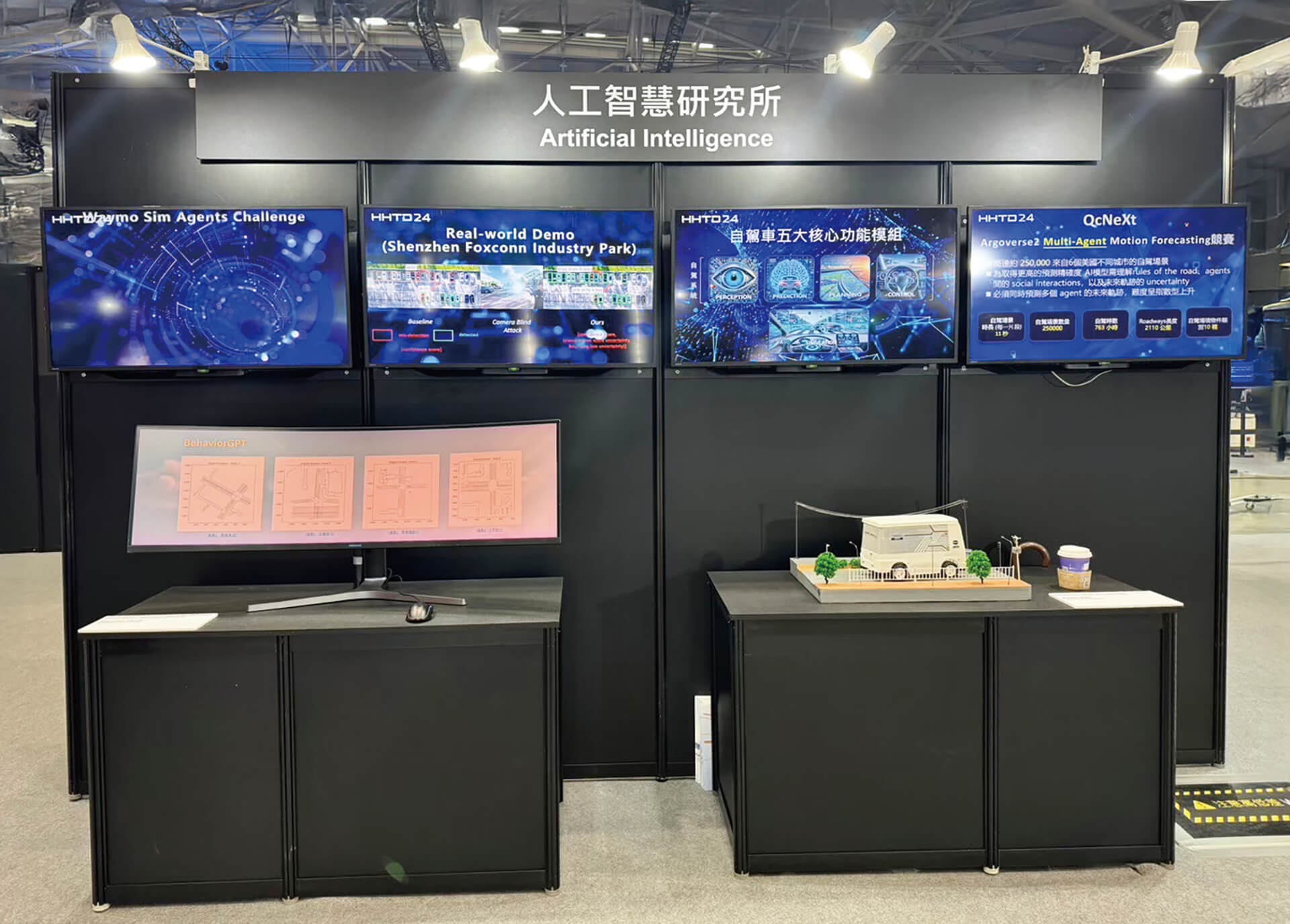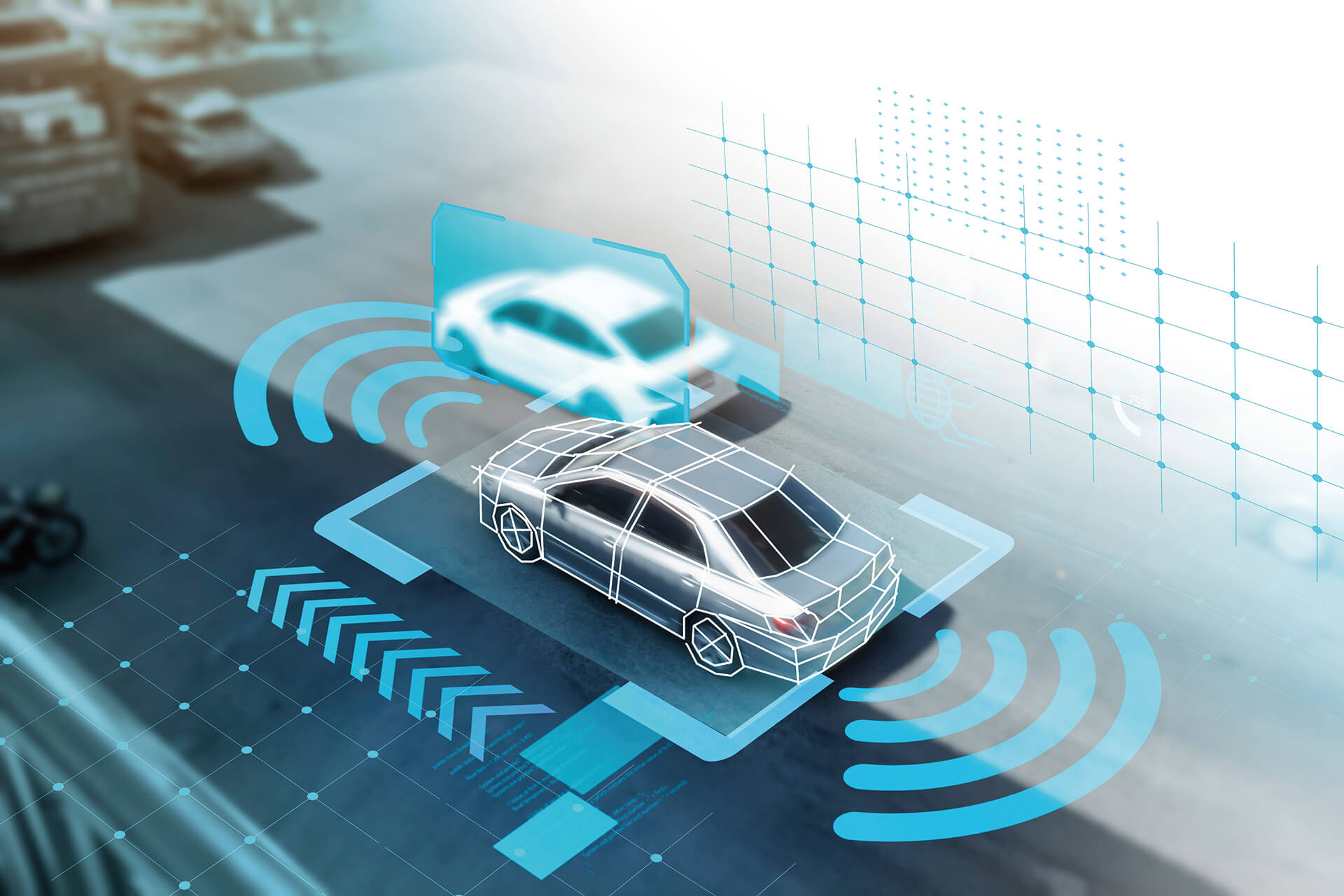Artificial Intelligence Research CenterAward-Winning Trajectory Prediction Models Powering Smarter Autonomous Driving
Have you ever wondered how an autonomous vehicle “thinks” as it manages to make precise turns and avoid pedestrians at a busy intersection? Behind every decision is a rapid sequence of high-speed computations: perceiving the environment, predicting the movements of nearby vehicles, and planning the safest route forward. All these are driven by exceptionally precise AI models.
The Three Pillars of Autonomous Driving
To understand how self-driving cars “think,” it is important to grasp three core technologies:
- Perception: Enables the vehicle to “see” and accurately interpret its surroundings, including vehicles, pedestrians, road markings, traffic signals, and all static and dynamic objects. Perception is the foundation of autonomy; any error at this stage can invalidate all subsequent decisions.
- Trajectory Prediction: Anticipates the future movements of nearby objects such as vehicles and pedestrians. For example, if a nearby car suddenly accelerates or signals a lane change, the system must predict its most likely path.
- Motion Planning: Uses perception and trajectory prediction to determine the vehicle's safest course. For example, if the system predicts another vehicle merging ahead, it may choose to slow down or change lanes to avoid a collision.
Global Recognition with Two First-Place Wins
Building on its expertise in core autonomous driving technologies, the Hon Hai Artificial Intelligence Research Center (AI Center) gained global recognition in 2024 at the prestigious IEEE/CVF Conference on Computer Vision and Pattern Recognition (CVPR), one of the world's leading AI conferences. In the trajectory prediction challenge, which focused on the second stage of autonomous driving, the Center earned two first-place finishes and one second-place.

One of the first-place finishes came from the Argoverse 2 Motion Forecasting Challenge, hosted by Argo AI through its open-source dataset and research platform, Argoverse.Designed as a venue for competition and collaboration, Argoverse accelerates the development and deployment of autonomous driving technologies.
In fact, the AI Center had earned recognition in the 2023 Argoverse 2 Challenge for its QCNet model, designed for real-time use in dynamic traffic environments. QCNet can process large volumes of vehicle, pedestrian, and complex traffic scenarios without increasing computational complexity, thus substantially improving the safety and reliability of autonomous driving systems.
Building on that success, the AI Center introduced Lite-QCNet in 2024, a model that applied attention-based patch-wise processing for temporal abstraction and a K-nearest neighbor (K-NN) local attention algorithm to capture spatial interactions. This design enables Lite-QCNet to maintain accuracy while significantly reducing computational load and model size. It achieved state-of-the-art performance on Argoverse 2 benchmarks, demonstrating outstanding efficiency in multi-agent motion prediction.
- Patch-wise Attention Technique
- A technique that divides input data into small patches and uses attention mechanisms to selectively analyze the most relevant regions. Commonly used in traffic simulation and other dynamic environments, it improves computational efficiency by focusing on salient features, much like how humans selectively attend to critical elements in complex driving scenarios.

Another first-place win came from the Waymo Motion Prediction Challenge, hosted by Waymo, Google's autonomous driving subsidiary. Focused on trajectory prediction in real-world driving scenarios, the competition aimed to advance autonomous driving technologies and to provide a platform for researchers to showcase their work and engage in technical exchange.
The challenge required teams to predict the future trajectories of each dynamic agent, such as vehicles and pedestrians, within simulated driving scenarios. A key requirement was that predictions must account for multiple plausible outcomes rather than focusing solely on the single most likely path. For instance, a vehicle might continue straight or switch lanes. The ability to model such multi-modal possibilities is essential for safe and reliable motion planning in autonomous systems.
Precision Computation Driving the Future of Autonomy
Following the AI Center's two first-place finishes, Director Yung-Hui Li emphasized that the success was not the result of any single factor but from strong performance in different areas, including data processing, model design, and multi-model integration.
He explained that even when working from the same dataset, variations in data cleaning, statistical analysis, and preprocessing could result in substantial performance differences. Likewise, while the Transformer architecture has become mainstream, each team customizes its structure, modules, and parameters differently, much like skilled craftsmen using similar tools to create unique works.
The two first-place finishes marked a significant step forward in autonomous driving technology, Lee explained. They demonstrated improved accuracy in predicting the intentions of surrounding vehicles, which enhanced decision-making in self-driving systems. In addition, they contributed to more realistic vehicle behavior within simulation environments, which in turn supported the training of smarter autonomous driving models.
Notably, these research milestones closely align with Hon Hai Technology Group's “3+3+3” transformation strategy, in which electric vehicles play a central role. As Director Li noted, autonomous driving is the critical convergence point between EVs and AI, making it essential to unlocking the full value and innovation potential of electric mobility.
Hon Hai Technology Group is actively investing in the independent training of foundational AI models in anticipation of the transformative shifts in the AI landscape. Its generative AI strategy centers on building three core platforms for smart manufacturing, smart EVs, and smart cities.
According to Director Li, the Fox Brain large language model, developed in-house by the Hon Hai Research Institute, will serve as the core foundational model powering all three platforms. It will also be integrated into the Group's autonomous driving technology, making it an indispensable part of Hon Hai's overall strategy.
- K-NN Local Attention Algorithm
- The model does not treat all agents equally before making predictions. Instead, it selects the K nearest neighbors for interaction modeling, then applies attention to assess their relative influence. This allows the model to assign differentiated weights and focus on the agents most likely to affect decision-making.